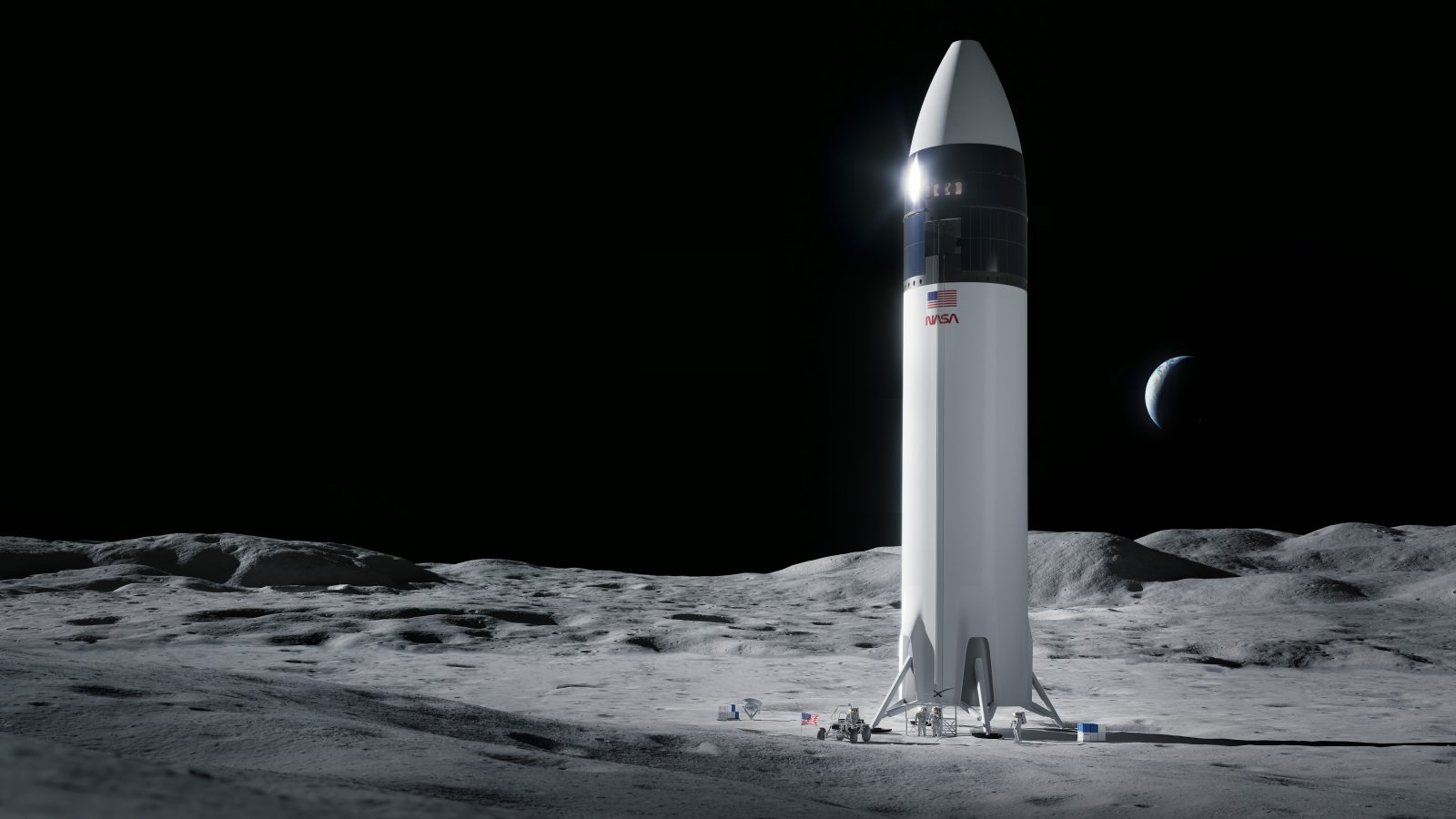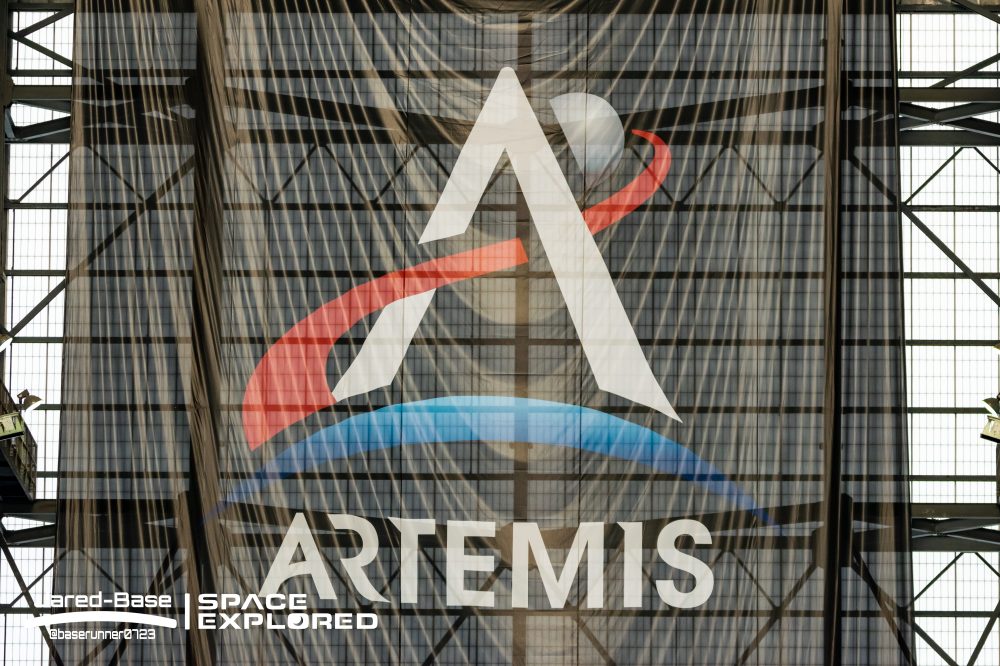
NASA is buying SpaceX’s Starship rocket a $2.9 billion ticket to the Moon, and the ramifications of that decision are plentiful. The Washington Post was first to report that Starship is NASA’s sole choice for the Artemis human landing system for astronauts going to the Moon. The agency later held a press conference with reporters during which it made the news official while adding more color to the story. NASA has also published a source selection statement written by Kathy Lueders detailing specifics around its decision.
America’s lunar human landing system
Let’s start with the obvious yet significant observation that SpaceX Starship development is now NASA’s Artemis lunar human landing system development. NASA isn’t just injecting nearly $3 billion into SpaceX (over time) for Starship development. The agency is relying on SpaceX to get its Starship launch system online as soon as safely possible.
There’s no change of plans for using the Space Launch System rocket and Orion spacecraft. However, every publicly streamed Starship development test conducted in South Texas is now a chance to watch a key part of the Artemis program come together.
We’ve already seen multiple Starship prototype vehicles successfully launch and complete flip maneuvers in high altitude tests. SpaceX hasn’t stuck the landing yet on Earth, but gravity and the need to reorient aren’t lunar issues for Starship. Super Heavy booster development is the next key aspect of Starship progress to track.

Artemis updates
Speaking of safely, that adjective is the new 2024 when it comes to sending astronauts back to the Moon. The Artemis program got its footing and name during the Trump administration with the leadership of former NASA administrator Jim Bridenstine. The Biden administration has embraced the effort to return to the Moon with a few tweaks.
NASA no longer uses language to say astronauts will walk on the Moon by 2024. This expedited target was largely viewed as political (the end of a theoretical second term for the former President) and unlikely to be reached without notable increases in NASA’s budget. NASA isn’t ruling out a 2024 lunar surface walk for astronauts, but the agency is instead emphasizing safety as part of the process leading up to the third Artemis mission.
NASA has also changed its language to emphasize that the Artemis program will put the first person of color on the Moon. The original tagline first woman and next man is now first woman and first person of color. Whomever those astronauts may be, they will touchdown on the Moon using SpaceX’s Starship.

Two Starship missions for NASA
The contract between NASA and SpaceX requires what will be a tremendous milestone for the company. SpaceX has to successfully land an uncrewed Starship vehicle on the Moon before using a Starship vehicle as the human landing system with astronauts on the Moon. This means we’ll actually see Starship (both the Starship vehicle and the Super Heavy booster) reach the Moon before the Artemis 3 mission.
SpaceX has already aced this process with sending an uncrewed Crew Dragon capsule to the International Space Station before later sending astronauts to the ISS on demonstration and operational missions. It will soon be Starship’s turn to do something similar, but on a much more distant target.

Launch site TBD
Also notable is the lack of a launch site requirement for Starship and its HLS mission. NASA says it intentionally chose not to require a launch from Kennedy Space Center in an effort to avoid limiting commercial partners. SpaceX currently launches from Launch Complex 39A and 40 at Kennedy Space Center and Cape Canaveral Space Force Station in Cape Canaveral. Starship test flights happen out of Boca Chica in South Texas.
This means we could see the Artemis human landing system launch from an oil rig that’s been refactored into a mobile spaceport in the Gulf of Mexico if SpaceX’s vision for Starship goes as planned. SpaceX has purchased two decommissioned oil rigs that are currently being refit to be launchpads for the next-gen rocket.

First of many human landing systems?
Starship will also need to interface with the Orion capsule during Artemis 3 for crew transfer in lunar orbit. Starship-Orion is a bit of an unlikely pairing as was the Apollo-Soyuz handshake. Future human landing systems will also need to interface with the Gateway Lunar Outpost, a crew and cargo holding station that will orbit the Moon.
And while SpaceX is contracted to provide the first human landing system for the Artemis Moon missions, NASA hasn’t ruled out bringing more HLS providers online in the future. Having multiple providers can be beneficial for competitive and redundancy reasons. This should be consolation to Blue Origin and Dynetics which were not chosen for the initial Artemis astronaut missions.
For now, the selection of Starship as NASA’s human landing system for Moon missions is another setback for Blue Origin’s New Glenn rocket and two fewer missions for ULA’s Vulcan rocket.
Enjoy reading Space Explored?
Help others find us by following on Apple News and Google News. Be sure to check us out on YouTube, Twitter, Facebook, and Instagram, join our Discord!
FTC: We use income earning auto affiliate links. More.


Comments